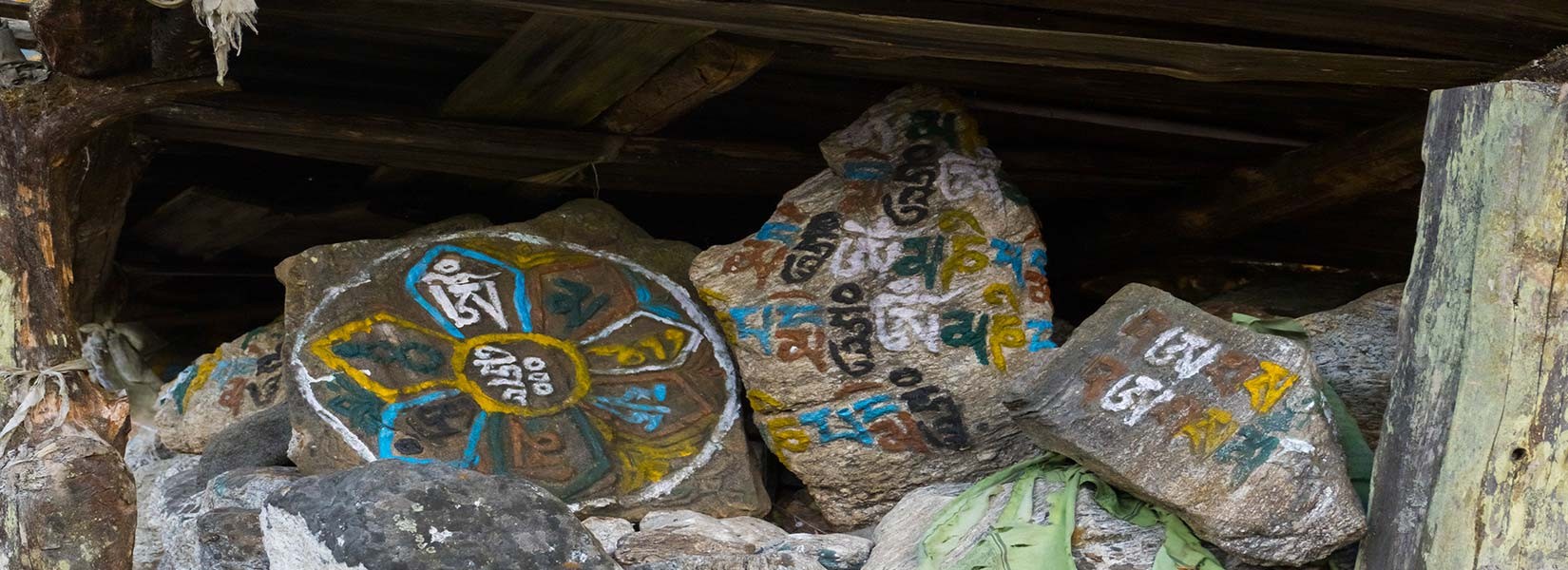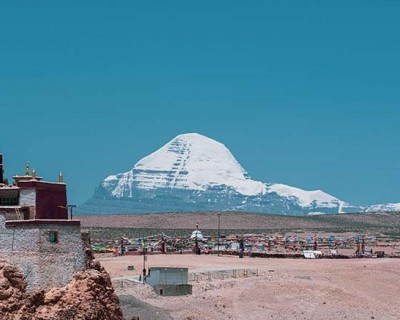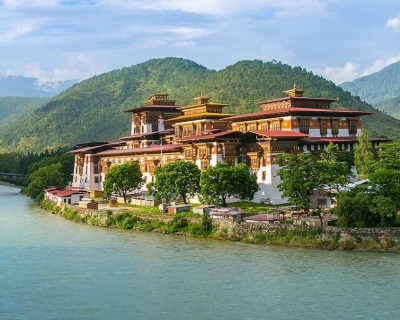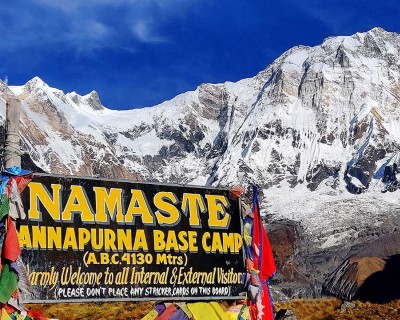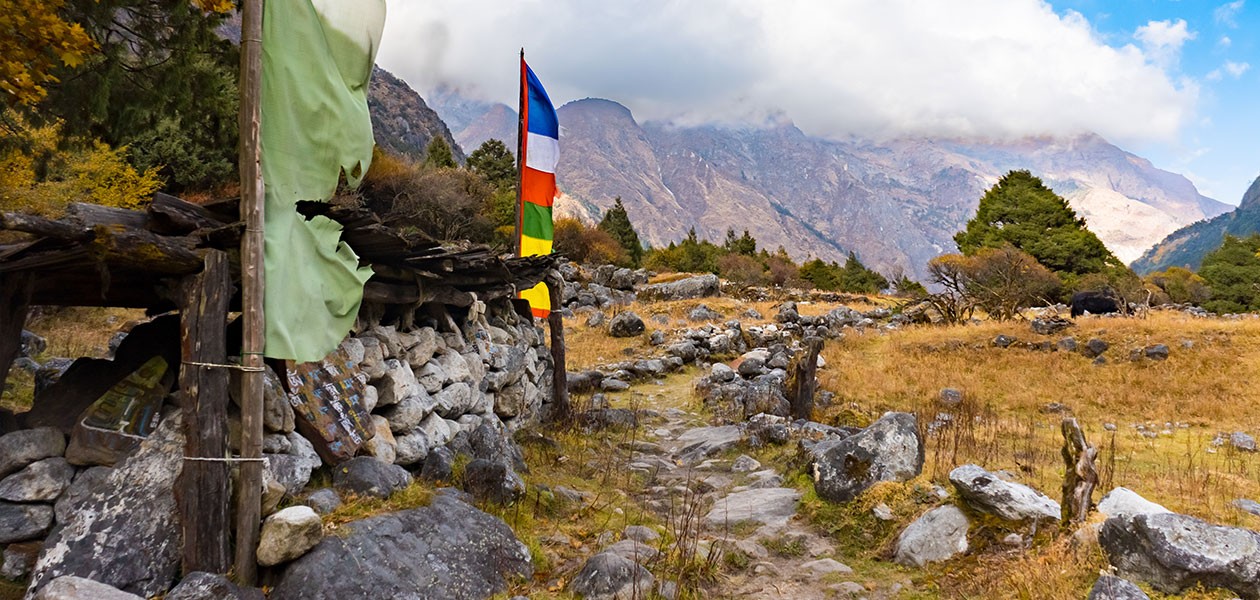
Kanchenjunga in Local Beliefs and Traditions
This is the third-highest peak in the world that shares a border between Nepal and Sikkim, India. Thus, this grand peak has immense cultural significance in the communities of both countries.
On the side of India, Sikkim, the Lepcha Tribe, believes that this sacred peak shares history with the origin of mankind. According to their mythology, the two humans from whom the whole of mankind descended were born from the snow of Kanchenjunga.
The Lepcha people refer to those two first humans as the ‘Children of the Snowy Peaks’. They also believe that spirits reside at the peak of this grand peak and with respect to the spirits residing on the top of this sacred peak, a pact was made. Chogyal, the monarch dynasty of the former kingdom of Sikkim, ruled from 1642 to 1975 made a promise to never violate the summit of Kanchenjunga.
That’s why Mount Kanchenjunga has great significance in the communities of Sikkim. As people believe that Sikkim has been built with the blessing of the mountain god, climbing the peak has been banned from their side since 2001. According to the religious beliefs in Sikkim, the natives see stepping on the summit of any peak as disrespectful, as they believe sacred spirits reside in every one of them.
Climbers from the Sikkim side take the 10-meter gap between the summit and slope as the summit of the mountain. Even the climbers who don’t share similar beliefs stop for a short period to show respect to the spirits on the mountain before pushing for the summit.
In Sikkim, there was a proposal to open 109 peaks for an expedition out of 374, excluding the expedition of 12 sacred peaks in the region. These sacred peaks are protected as the worshipping monument of Buddhists and are protected under the provision of the ‘Places of Worship Act 1991’.
There are also several caves, rocks, lakes, chortens and hot springs on the Sikkim that are considered sacred. The natives of Sikkim see Mount Kanchenjunga as their god and adobe of gods.
Legends and Mythology Surrounding Kanchenjunga
There is also a myth related to demons surrounding the Kanchenjunga. Natives, especially of the Tibetan Buddhism culture, believe that this third-highest peak in the world is home to the mountain deity known as ‘Dzonga’.
This local deity is considered to be a type of ‘rakshasa’ or a yeti that freely roams on the slope of the mountain. During a geological expedition of the British in 1925, they also reported to have spotted a bipedal creature on the mountain.
When the expedition team asked the locals about the creature they witnessed on the mountain slope, the native referred to the creature as a ‘Kanchenjunga Demon’. Similarly, other climbers who have taken on the challenging slopes of Kanchenjunga have also reported seeing spirits, demons, apparitions and heard voices during their time on the mountain.
In 1963, Tulshuk Lingp and his twelve followers, who were in search of the gateway to another reality on the mountain, vanished under the snow. Similarly, during 1992, Wanda Rutkiewicz, who was attempting to climb Kanchenjunga as the first woman to scale all the 14 highest peaks in the world, disappeared in thin air and her body was never recovered.
The other local myths that further enrich the spiritual aura of this grand peak often revolve around the hidden treasures, divine encounters and the presence of mythical creatures. All of them collectively contribute to the mythical status of the Mount Kanchenjunga.
To this date, the northeastern route of Sikkim has only seen three successful summits.
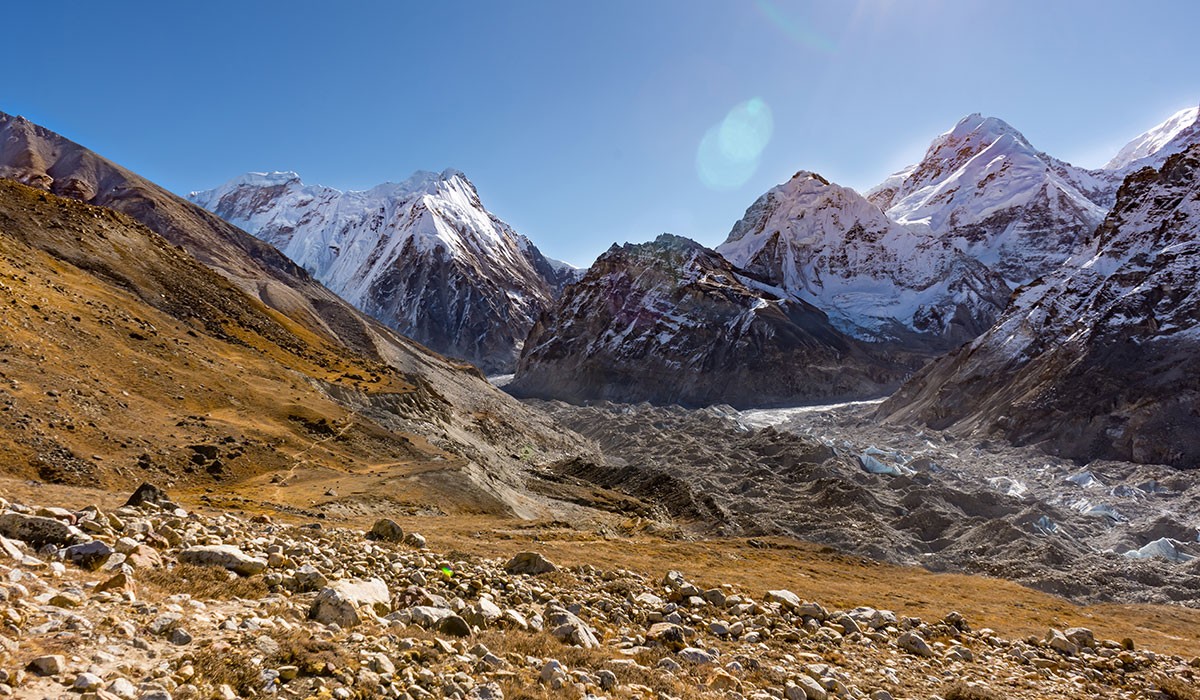
Spooky Tales About Kanchenjunga
Mount Kanchenjunga is one of the most challenging peaks to climb in the 14 highest peak categories. Due to its extreme altitudes and challenging slopes, just a few succeed in conquering the slope; meanwhile, some return defeated, others perish in the snow.
Climbers who have taken up on a journey across the demanding slopes of this slope have often shared spooky stories that can send chill down your spine. It is believed that the mountain is full of spirits; some are good spirits and some are negative.
The climbers believe that the negative spirits try to scare the climbers and push them to their deaths. However, the good spirits, believed to be mostly of the former climbers, help th climbers get to their tents and keep them safe from the negative spirits.
There has also been one such incident where a climber heard the ridges on the glacier argue with each other. While some of the ridges wanted him to die, others guided him forward. The climber also said that he felt the presence of a spirit, probably of a previous climber, who guided him safely to his tent.
Kanchenjunga’s Role in Indigenous Rituals
Mount Kanchenjunga, in both communities of Nepal and Sikkim, is revered as a sacred entity. This sacred peak has a core relationship with the cultural and spiritual fabric of the surrounding regions. For the communities thriving beneath this grand peak, Kanchenjunga is not just a geographical feature but a spiritual guardian as well, which is the embodiment of the mystical and divine presence.
For the Sikkimese inhabitants who see this mountain as the home of their benevolent deity, its veneration is embedded deeply in their daily life, culture, traditions and rituals. The communities around the region of this towering peak often held elaborate ceremonies to honor the mountain spirit for its nourishment and divine protection.
These rituals are held at certain periods across the year and are usually led by spiritual or community leaders. The mountain spirit honoring rituals generally include prayers, ritual dances, and offerings that are to appease the mountain deity and seek its blessings.
One such major ritual related to Kanchenjunga is Pang Lhabsol, which is celebrated by the natives of Sikkim. During this festival, the communities of Sikkim gather to offer prayers, perform masked dances and elaborate reconstruction ceremonies to pay homage to the guardian deity.
The Sikkim natives take this celebration as a reminder of their spiritual bond with the mountain and see it as a manifestation of respect of the communites for nature. Similarly, the Sherpa and Limbu communities in the eastern part of Nepal consider the mountain to be the adobe of Yuma Sammang, their ancestor.
Several festivals are celebrated across the year to honor their ancestor deity. In communities of both nations , the ritual to honor the mountain spirit is not seen as just a mere cultural relish but as a living tradition that symbolizes the harmonious relationship of the communities with nature.
Kanchenjunga for Modern-Day Trekkers
In this modern age, this sacred peak doesn’t only attract spiritual pilgrims but also trekkers and climbers from all over the world. Many adventures taking on the tranquil trails of this region have spiked about the deep spiritual connection with the mountain and how palpable and transformative it feels as you get closer to the grand peak.
The spiritual aura of this sacred peak continues to resonate across the corners of the Himalayas, transcending the religious and spiritual boundaries. Kanchenjunga Trek is Nepal, which is an off-beaten experience that explores the most secluded part of the far eastern Himalayas.
Due to its soul-stirring connection with spirituality and nature, raw wilderness factors, ancient settlements that have intact culture and traditions from ancient times, and the beauty of epic eastern Himalayan mountain peaks, this region is known for the best Himalayan experience.
Every year hundreds of trekkers from all over the world explore the foothills of the Kanchenjunga to relish the true Himalayan beauty and soak in its spiritual ambiance that is known to broaden one’s perspective about life and awaken spirituality.
On Nepal’s side, there are two options to explore the foothills of this guardian peak. Kanchenjunga Trek is a beautiful experience that takes trekkers to the North Base Camp (5,065 meters) of the mountain. This is a short and sweet expedition for an exciting trip to this off-beaten region.
As for the circumnavigating journey of this peak, also known as ‘Kora’, Kanchenjunga Circuit Trek is the most ideal option. This elongated trip circles this sacred peak and takes you to both base camps situated at the foothills of the peak.
So, this route to the modern-day trekkers is famous as a journey in solitude that provides an opportunity to experience the true Himalayan beauty and heed the call of nature and spirituality.
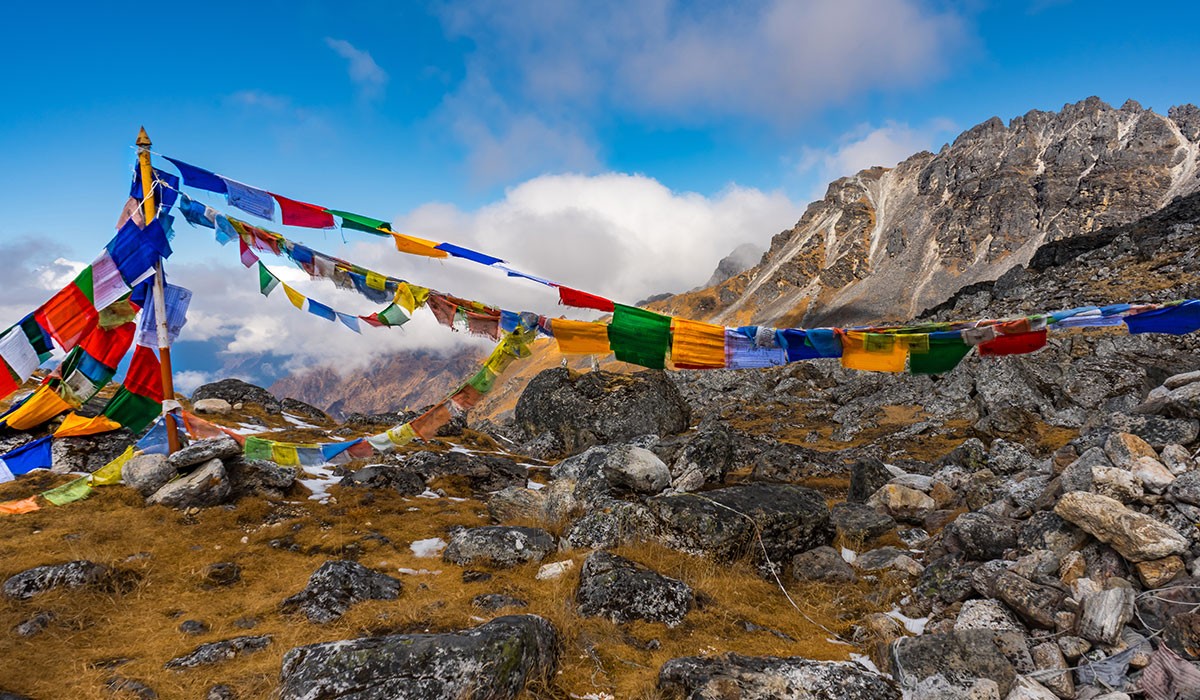
Kanchenjunga’s Sacred Landscape and Its Impact on Conservation
Whether it is due to the sense of duty and responsibility toward this sacred peak, which is revered as a guardian peak, or as a notion to preserve the environment. Kanchenjunga’s sacredness has certainly helped to conserve the environment.
On the Nepali side, the Kanchenjunga Conservation Area was established in 1998 and it covers an area of 2,035 sq. km. This Himalayan conservation area is seen as a tri-national peace park sharing a border with Tibet, an autonomous region of China to the north and Sikkim to the east.
Sikkim also has the Khangchenzonga National Park, which is adjoining the Kanchenjunga Conservation Area. As for the Tibetan side, the extension of Qomolungma Nature Reserve is still in process. The Government of Nepal declared the Kanchenjunga region as part of WWF’s Living Planet Campaign in 2000 as well.
These conserved areas beneath this sacred peak aim to protect the high-altitude flora and fauna, as well as religious sentiments and spiritual significance. At the same time, they also aim to promote sustainable tourism practises with eco-friendly approaches and community involvement.
Some Interesting Facts about Kanchenjunga
- Kanchenjunga is often considered a singular peak, but it is, in fact, a combination of five peaks; that’s how it earned the name ‘The Five Treasures of Snow’
- Due to its extreme difficulty level, this is the second least climbed mountain in the Himalayas after Mount Annapurna (8,091 meters)
- It is believed that mankind took form from the snow of this peak; the first two humans, referred to as the ‘Children of the Snowy Peaks’ are believed to have taken birth from the snow of this sacred peak
- This mountain is believed to have many spirits (good and bad) that the mountaineers come in contact with during their expedition
- The top of Mount Kanchenjunga is very sacred and it is believed to be taboo to step on the summit among the Lepcha Tribe in Sikkim
- According to legends, the Chogyual dynasty of Sikkim (ruled from 1642 to 1975) made a promise with the spirit of the mountain that no one would violate the summit of the peak
- Mount Kancghejunga in the local Limbu language is known as ‘Sewalungma’ which can be translated to ‘Mountain that we offer greeting to’
- This sacred mountain was considered to be the highest peak in the world until 1852; due to the religious beliefs of locals, nobody stepped on the mountain for a long period, which resulted in the late discovery of the tallest peak
- In 1955, Joe Brown and George Band became the first people to successfully climb Mount Kanchenjunga, however, to honor the beliefs of the natives, they stopped few feets away from the summit point


